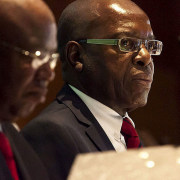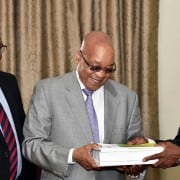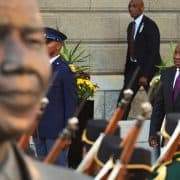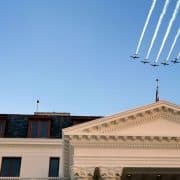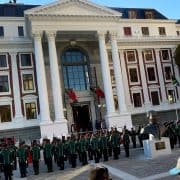|
Getting your Trinity Audio player ready...
|
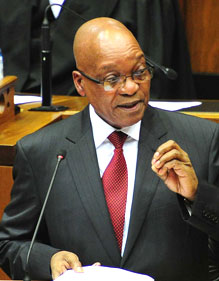 By Valencia Talane
By Valencia Talane
The first sign of work done on the ground by the chief procurement officer (CPO) was an announcement by President Jacob Zuma in his State of the Nation Address (Sona) of the centralised procurement by the office of furniture for Eastern Cape schools.
“We have begun piloting this new approach with the centralised procurement of school furniture in the Eastern Cape,” said Zuma to some applause from a joint sitting of the National Assembly and the National Council of Provinces in Parliament. “The furniture will be delivered in all Eastern Cape schools by the middle of August 2014.”
Zuma’s second Sona of the year was necessary because 2014 is an election year. In such a year, a new Parliament and therefore a new government, is established to oversee the running of a new administration. The address on Tuesday evening, 17 June, was meant to speak to government’s plan of action over the next five years.
Read the full text of the State of the Nation, June 2014, address here.
Keeping tabs on procurement spending
The office of the CPO, which functions under Treasury, was established in an effort to eradicate widespread procurement corruption and irregularities that occur across the different government spheres. Kenneth Brown, a former deputy director general of intergovernmental relations in the treasury, is head of the new division.
The CPO’s mandate includes overseeing and monitoring public sector procurement practices to ensure compliance with the regulatory framework.
According to an Engineering News report from early this year, departments and agencies of government across the national, provincial and local levels spend R460-billion on procuring goods and services every year. These range from service vehicles for the police to textbooks for schools and medication for hospitals.
“There are at least 660 entities engaging in procurement activities, including the 278 municipalities, but not including all state-owned enterprises and agencies,” reads the report, which gives a unique view of the complexities of the function of procurement within the public sector.
In an interview with the publication, Brown said his priority was to improve efficiency and visibility across the value-chain so as to guarantee value for money and a reduction in waste.
He further revealed that it became apparent soon after his appointment in early 2013 that the issue of corruption had to be separated out from this reform agenda.
“There are law enforcement agencies that must be able to do their work,” said Brown. “I, on the other hand, am looking for proactive measures to minimise leakage in the system, while improving service delivery.”
It seems Brown’s office is heading in the right direction. In November last year, Corruption Watch revealed the appalling conditions under which learners at Macosa Junior Secondary School near Mthatha, Eastern Cape, learn. The lack of infrastructure at the school, which meant that in some cases learners had to sit on blocks of concrete or upturned buckets, shocked many of our readers.
Corruption Watch was alerted to Macosa’s dire situation by a tip-off from a concerned citizen who viewed the lack of infrastructure at the school as a red flag for corruption.
Macosa has almost 500 pupils from poverty stricken communities. According to the principal, Mrs Siko, the school had not received furniture from the department of education since 1990 when she first started teaching there, and now what furniture remains is 23 years old and falling apart. A committed teacher, she said the conditions at the school were so bad that she was ashamed to see her learners suffering.
August, therefore, will be a revealing deadline for the measures that Zuma's office has put in place to deal with procurement corruption that costs the state billions every year, and affects the people who most need the service and facilities.
No elaboration on anti-corruption agencies’ progress
The other good news to come out of the Sona is the move towards cementing legislation around public officials and representatives doing business with the state. Zuma spoke of the “improved implementation of the Financial Disclosure Framework, strengthened protection of whistle-blowers, and the provision of technical assistance to departments for the effective management of discipline.”
Not all feedback was rosy, however. Very little was said by Zuma of the work of the different state organs mandated to fight corruption in the public sector. “The Special Investigating Unit, the Anti-Corruption Task Team, the Asset Forfeiture Unit and the Hawks, have made notable progress in our quest to combat corruption in society broadly and in the public sector,” said Zuma, without further explanation on these agencies’ cases or their plans of action.
He made another fleeting reference to the performance agreements to be signed by every minister. According to Zuma, these will outline “what each department will do to deliver on the programme of action.”
What the president left out, however, was an explanation of the accountability measures he would put in place to ensure that ministers who fail the terms of the agreements do their work.


